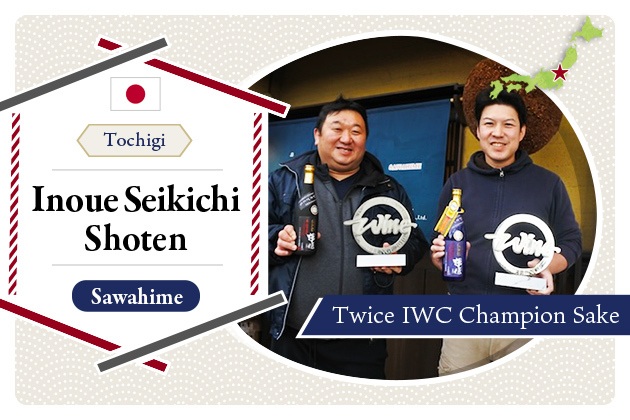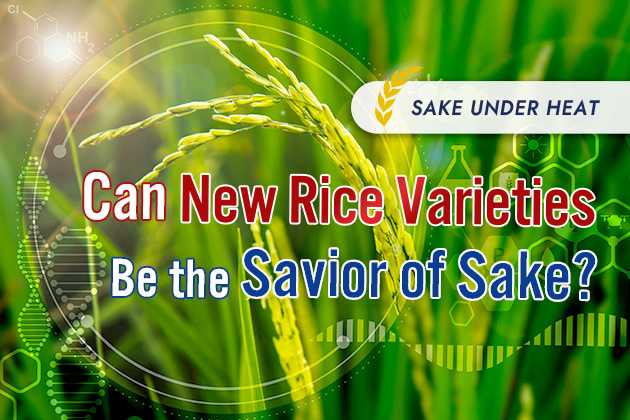
2022.08
21
What are the differences between sake and shochu? Methods, components, and how to drink them.
Both sake (日本酒) and shochu (焼酎) are traditional liquors that originated in Japan. They share quite a few features in common--throughout Japan, there are makers of these drinks, and both involve koji in the manufacturing process—however, their flavors are very distinct.
What are the differences between sake and shochu? We delve into how to make these liquors, their components, and how to drink each of them.
Brewed and distilled liquors: Differences lie in the manufacturing process
World's alcoholic beverages can be categorized by manufacturing method into brewed and distilled liquors.
Brewed liquor is drinks made by alcoholic fermentation of sugar-containing ingredients using yeast. Sake is a brewed liquor, and so are wine and beer.
Distilled liquor is made by distilling brewed alcohol. As alcohol is faster to evaporate than water, brewed liquor is heated and vaporized, and the vapor is collected and cooled to be reverted back to the liquid state, which is higher in alcohol content than the original brewed liquor. Shochu is categorized in distilled liquor, along with gin, vodka, and whiskey.
Sake is a brewed liquor, but its main ingredient, rice, does not contain sugar. Therefore, it requires the use of koji to break down rice's starch into sugar, and then the sugar is turned into alcohol by yeast. Shochu is also made by turning starch in rice or other ingredients into alcohol by koji and yeast, but then it is completed by distillation.
Manufacturing methods of sake and shochu are made simple and shown in diagrams below.
Read more on sake production in detail is here:
Ingredients of each drink: Rice for sake, and more variety for shochu
There are some ingredients in common between sake and shochu, but there are divergences as well. Let's take a look.
Main ingredients for sake are rice, rice koji, and water. For the products labelled "junmai (純米)", "junmai ginjo (純米吟醸)", and "junmai daiginjo (純米大吟醸)" that claim to be "junmai" need to be brewed with only the three ingredients.
Another representative ingredient of sake is "jozo alcohol (distilled alcohol)". It is alcohol of high purity made from ingredients such as sugar cane. Honjozo (本醸造) and ginjo (吟醸) sake include jozo alcohol in addition to rice, rice koji, and water.
Ingredients in shochu are generally koji, water, and one of barley, rice, or sweet potato. As for koji, barley koji or rice koji is used in making barley shochu, and rice koji for other kinds of shochu for the most part. The range of ingredients for shochu is wider than those for sake, and for some more minor labels, the main ingredient can be soba, chestnut, or seaweed instead of rice or barley.
Carbohydrates, alcohol content, and calories
There are differences between sake and shochu in terms of alcohol content, carbohydrate contained, and calories. Let's delve into each of these.
Alcohol content of sake and shochu
Basically, sake is lower in its alcohol content than shochu. This is because distillation process in shochu making raises the alcohol level.
Legally, alcohol content of sake is regulated to be below 22% (Liquor Tax Act Article 3, Section 7). Generally speaking, alcohol content of sake is between 15 and 16%, and for some genshu (undiluted sake) it may be up to 20%.
On the other hand, alcohol content of shochu is defined as below 36% (multiple or continuous distillation), or below 45% (single distillation, or pot still) by law (Liquor Tax Act Article 3, Sections 8 and 9). Shochu's alcohol content is usually between 20 and 25%, and higher figures can be up to around 40%.
Carbohydrates and calories of sake and shochu
Sake contains carbohydrates, but shochu does not. Distillation in shochu making removes basically everything except for alcohol, water and aroma components, leaving zero carbohydrates. As for sake, it contains 3.6g of carbohydrates per 100g (Ministry of Education, Culture, Sports, Science and Technology (MEXT), Standard Tables of Food Composition in Japan, 2020, 8th revised edition).
If compared by the same weight, sake contains lower calories than shochu. According to MEXT's Standard Tables of Food Composition in Japan, 2020, 8th revised edition, calorie counts per 100g are as follows. -Junmai-shu: 102kcal -Multiple-distillation shochu (korui (甲類)): 203kcal -Single-distillation shochu (otsurui (乙類)): 144kcal
As shown above, sake contains less calories than shochu of the same amount. At the same time, as discussed before, there are differences in amounts of alcohol and carbohydrates contained between sake and shochu.
Alcohol has its own calories, often called "empty calories", as it contains no nutritional components and is easy to break down as heat. It is advisable to drink in a healthy manner, taking into consideration alcohol content and other nutritional components and not simply comparing calories.
Read more on sake and weight gain here.
How to drink sake and shochu
Sake and shochu are enjoyed in different manners.
Typically, sake is consumed straight, without adding anything else. It is also specific to sake that it is drunk at a wide range of temperatures such as chilled, at room temperature, and heated. The ways in which aromas and flavors are felt differ depending on the temperature, providing various experiences with one kind of sake. One may enjoy sake with higher alcohol content and stronger flavor, such as genshu (undiluted sake), on the rocks, or with soda water.
Shochu, on the other hand, are consumed in a variety of manners—straight, on the rocks, with water, hot water, soda water, and tea. Because of its high alcohol content, it can withstand addition of many other ingredients.
Recently, both sake and shochu are often used as the base for cocktails. You may be pleasantly surprised if you order such a cocktail at a bar.
Let's drink sake and shochu with the knowledge of each
This article explained about the differences between sake and shochu. Although both are Japanese liquors, we learned that they are different in ingredients, components and ways to enjoy.
Despite some common characteristics, sake and shochu are distinct. With the knowledge of how to enjoy each, you may be able to select one or the other that suits a particular occasion. Going beyond one's comfort zone may lead to new discoveries—so every once in a while, sake drinkers can opt for shochu, and shochu drinkers for sake.
Pickup Articles
2019.01.18
2019.01.25
Trending Articles
Popular Articles
Recent Articles













